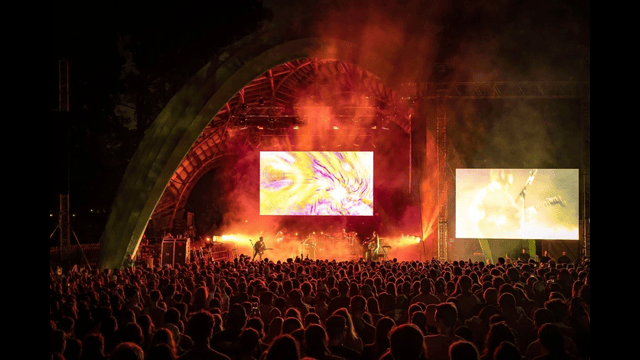
An ancient supernova from the early universe appears three times due to a phenomenon called gravitational lensing, which magnifies and replicates its light. Live Science
The James Webb Space Telescope (JWST) has uncovered new evidence suggesting that our understanding of the universe may be flawed. Astronomers have identified an ongoing issue known as the Hubble tension, where measurements of the universe's expansion rate appear to vary significantly depending on where they are taken.
In simple terms, the universe seems to be expanding at different speeds. Data from the early universe aligns closely with our current cosmological models, but measurements taken closer to Earth show discrepancies that could challenge these models. Recent research involving the light from a supernova located 10.2 billion light-years away has revealed that this issue is likely to persist. The findings were detailed in several papers published in The Astrophysical Journal and are also available on the preprint site arXiv.
Brenda Frye, a co-author and astronomy professor at the University of Arizona, stated, "Our team's results are impactful: The Hubble constant value matches other measurements in the local universe and is somewhat in tension with values obtained when the universe was young."
To understand the Hubble constant—the rate at which the universe is expanding—scientists typically rely on two primary methods. The first method examines subtle variations in the cosmic microwave background, a remnant of the universe's earliest light formed just 380,000 years after the Big Bang. This method estimates the expansion rate at about 67 kilometres per second per megaparsec (km/s/Mpc), which aligns with predictions from the standard cosmological model.
Here are some of the latest measurements of the Hubble constant. From left to right, the sources include images of the cosmic microwave background taken by the Planck satellite, data from gravitational lensing and Red Giant Branch stars observed by NASA's Hubble Space Telescope, and measurements of Cepheid stars collected by the James Webb Space Telescope. Live Science
However, the second method, which measures distances using a type of pulsating star called Cepheid variables, yields a significantly higher rate of 73.2 km/s/Mpc. While this difference may seem minor, it poses a major contradiction to established predictions. According to the standard model, dark energy is believed to drive the universe's expansion at a consistent rate. The new data raises questions about this understanding.
In recent studies, astronomers directed JWST’s near-infrared camera (NIRCam) at the galaxy cluster known as PLCK G165.7+67.0, located 3.6 billion light-years away. They discovered three separate points of light originating from a single Type Ia supernova, whose light had been magnified and distorted by the gravity of an intervening galaxy. Type Ia supernovae occur when material from one star falls onto a white dwarf, the remnant of a dead star, leading to a massive explosion. These explosions are consistent in brightness, making them reliable "standard candles" for measuring distances and calculating the Hubble constant.
This illustration shows the universe's evolution, starting with the Big Bang on the left and depicting the current state of the universe on the right. Live Science
Further observations from ground-based telescopes in Arizona confirmed the origins of the light sources. By analyzing the time delays between the light points and incorporating the distance of the supernova into models of gravitational lensing, the researchers arrived at a Hubble constant value of 75.4 km/s/Mpc, with a margin of error of plus or minus 8.1. This result starkly contradicts the predictions made by the standard model.
Despite these new findings, the debate around the Hubble tension is far from over. Other research teams are also exploring this cosmic puzzle, and the JWST team plans to keep investigating other exploding stars to gather more crucial information.















